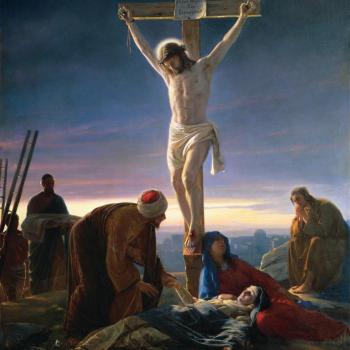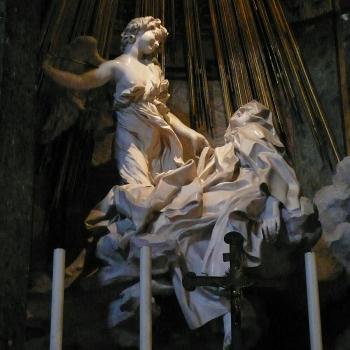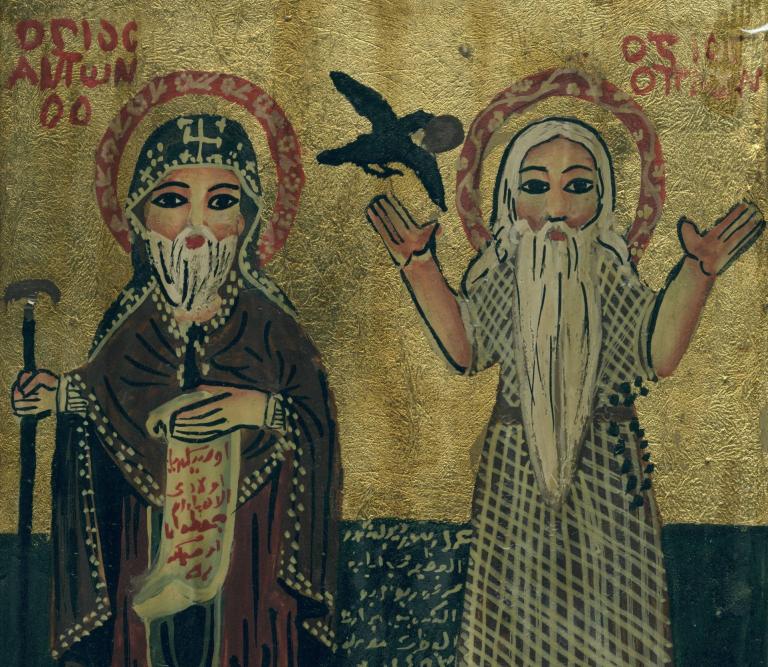is the profile of somebody I didn’t know about, or didn’t know was Catholic, and now find immensely intriguing. Here’s my friend Catherine Addington on Cornelia Augusta Peacock Connelly, who founded a teaching order and lost custody of her children in a hard-fought legal battle with her Protestant-then-Catholic-then-Protestant husband:
When Cornelia Augusta Peacock met Pierce Connelly, she was an orphaned heiress whose wealthy Presbyterian relatives disapproved of her marrying a middle-class vicar—let alone an Episcopalian. Young, smitten and economically independent, they were married in 1831 anyway. They immediately disembarked to Natchez, Miss., where Pierce had been offered a rectory. Between her family fortune and his land investments, the couple fit well into Natchez’s planter class, to whom they ministered at Trinity Episcopal Parish. Meanwhile, they welcomed two children, Mercer and Adeline. They were, by all accounts, happy.
Over the course of their time in Mississippi, Pierce began to wrestle with his faith. He was dissatisfied with the Episcopal tradition’s claim on divine origins and found himself attracted to what he perceived as the more straightforwardly absolute authority of Roman Catholicism. He resigned his parish—and his family’s financial security—in August 1835. In his letter of abjuration, he wrote: “Subordination I consider the first principle of all law…. I must have some guide to lead me into truth; I must have some power to obey.”
more; the one flaw in this article is that Connelly’s involvement with the slave trade appears and then disappears. We may just not know anything about whether she repented, or what her order did regarding slavery, after the events Addington describes, but if so I wish that had been said. Bonus material including Connelly’s intense letters to her sister here.
Next up, the cause for canonization of Black Elk, “the Lakota medicine man turned Catholic teacher,” explored through a portrait of the people of the Pine Ridge Reservation:
In Our Lady of the Sioux, a small Catholic church in Oglala, S.D., George Looks Twice is waiting. Looks Twice, 83, holds a stick next to a drum that sits beneath his legs as the priest intones the eucharistic prayer. He is waiting for the point of consecration, where the bread becomes the Body of Christ. But instead of ringing bells, Looks Twice will strike the drum three times, the honor beats heard in the Sun Dance and other Lakota traditional songs. The drum will give honor to Jesus, whom the Lakota call Wanikiya, “He Who Makes Live.”
In one sense, George Looks Twice has been waiting since 2012. In October of that year he was in Rome for the canonization of Kateri Tekakwitha, the 17th-century Mohawk woman who became the first Native American saint from North America. It was during that trip when Looks Twice first thought of how his grandfather Nicholas Black Elk could one day too be declared a saint by the Catholic Church.
more; in some respects the controversies discussed in this piece remind me of similar concerns about the canonization of St. Teresa Benedicta of the Cross, aka Edith Stein, for whose witness I’m deeply grateful. There’s a lot in this piece, also, about the complications of belonging to and needing a church whose members have committed grave crimes against you and your people.
And finally, an obituary for Sister Mary Antonia Ebo:
Though raised Baptist, Ebo was drawn to Catholicism during two extended hospital stays in her adolescent years, first at St. Joseph Hospital in Bloomington, Ill., administered by the Sisters of the Third Order of St. Francis, and later the Fairview Sanatorium in Normal, Ill. Intrigued by the spirituality of the kind lay workers at St. Joseph, Ebo requested to receive religious instruction from a visiting priest while she was hospitalized with tuberculosis at Fairview. She soon was received into the Catholic Church.
Following her recovery, Ebo became the first African-American admitted to Holy Trinity High School in Bloomington, and upon her graduation, she sought to enter a Catholic nursing school. But her applications were rejected solely on the basis of race. Distraught, Ebo eventually enrolled at St. Mary’s (Colored) Infirmary Training School in St. Louis, the nation’s first and only black Catholic nursing school. In 1944, the Sisters of St. Mary, who administered the school, received federal subsidies and began training women as nurses as a part of the war effort. That same year, Ebo entered the all-black nursing school on a full-tuition scholarship as a nurse cadet.
Called to religious life after her conversion, Ebo was first encouraged to enter the Oblate Sisters of Providence, the nation’s first successful order of black nuns, since no white sisterhoods in Illinois or Missouri accepted black candidates. But when Ebo learned that the Sisters of St. Mary were considering lifting their ban on black members, she held out. In July of 1946, Ebo became one of the first three African-American women accepted into the historically German order.
Their admission, however, did not translate into immediate or sincere acceptance.
more and yeah, it’s a rough read–at once inspiring and shaming. What an amazing woman.















